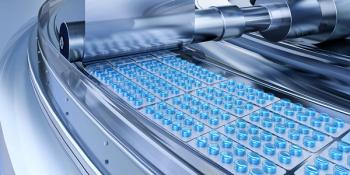
Equipment and Processing Report
- Equipment and Processing Report-05-16-2018
- Volume 11
- Issue 6
Addressing Continuous Manufacturing’s Growing Pains
As more continuous processes move toward commercialization, users and equipment vendors are working to speed changeovers and address other needs.
Now that global regulators have approved four oral solid-dosage drugs that were made using continuous processes-two from Vertex (in 2015 and 2018), one from Janssen (in 2016), and one from Eli Lilly (in 2017)-equipment manufacturers and early adopters are working to resolve engineering challenges that may be hindering more widespread use of continuous manufacturing (CM). Equipment cleaning and configuration is one such challenge; so is operator training. At a roundtable hosted by Pharmaceutical Technology at INTERPHEX in April 2018, panelists discussed efforts within the industry.
Cleaning CM equipment
Equipment manufacturers are adapting to requirements that have been identified by early adopters. First there was the need to make equipment such as mixers and extruders smaller. Then came the need to automate them. The emphasis now is on simplifying changeover and cleaning, said Sharon Nowak, global business development manager at Coperion-K Tron.
Coperion KTron, for example, introduced the next-generation of it pharmaceutical loss-in-weight feeder with a smaller modular design that allows easier change-out of feeders and hoppers for greater flexibility and easier cleaning (1).
Improving changeover speed will take some effort, given the industry’s trend to process multiple products on the same equipment and to integrate equipment from different vendors on the same line. “There can be upwards of 1000 individual parts in a continuous processing train as well as a couple hundred tri-clamps-associated gaskets, which makes cleaning and turnover a lengthy process,” noted Dave DiProspero, associate and director of pharmaceutical process technology at CRB.
The need to disassemble, swab, clean, and reassemble the equipment is a time-consuming and complex process, noted Jose Luis Santos, head of operations for drug product continuous manufacturing at Hovione, a contract manufacturer that is partnering with Vertex. Although cleaning is currently done manually, automated clean-in-place (CIP) systems could be considered for future designs. “In addition to the equipment, rooms need to be cleaned. CIP could enable greater efficiency,” commented Santos.
At Vertex’ facility in Boston, however, the company chose not to use CIP because of issues and cost associated with wastewater at that location. Vertex is, instead, considering an automated washer that will reduce cleaning time dramatically, David Nadig noted in a presentation at IFPAC (2).
Like other companies that have adopted continuous processes, Hovione is now measuring the time required for each activity and the sequence of operations within continuous, in an effort to reduce the overall time required and to determine the optimal staffing requirements, said Santos.
“Companies are going through each stage to identify bottlenecks and areas where they can reduce the amount of time required,” said Doug Hausner, associate director for Industrial Relations and Business Development with the Engineering Research Center for Structured Organic Particulate Systems located at Rutgers University. “As a result, cleaning is becoming part of the initial equipment design stage for continuous processing.”
In addition, he noted, ergonomics is becoming a more important design factor. For example, Eli Lilly optimized placement of feeders in its continuous processing suite, and placed them on tracks and turntables to cut down cleaning, maintenance, and changeover time.
Training and knowledge transfer
Human resources and training will be crucial. Currently, processes are typically run by PhD-level engineers, but eventually will need to be run by process engineers and trained operators. Despite a great level of automation in continuous manufacturing rigs, operator intervention and close monitoring are key for success. “You can’t have someone running the process from a control room. You need the process engineer on the floor, giving close attention to several different unit operations at the same time,” said Santos.
It will also be important to change the approach to standard operating procedures (SOPs), which, today, can run in the thousands of pages for each unit operation. “You want to digest this information so that it can be used in the field, for example, with checklists highlighting the most important steps to take,” said Santos. Then, if a user is not familiar with the process, they can be referred back to the relevant SOP, without carrying tomes of paper. Technology such as making SOPs available via human-machine interfaces or mobile devices could be used to get information to the operator at the right place and time.
Benefits
Despite these challenges and others, those involved with CM implementation say that the opportunity for benefits of a flexible, efficient process that offers greater speed of development, scaleup, and tech transfer and can run under a high level of control is well worth the effort. Panelists see continuous manufacturing becoming increasingly important for orphan drugs and rare disease therapies, as well as for generics. “We’re working with a number of generic-drug companies on business cases…it is my belief that once cleaning and some of these other hurdles are cleared, more companies will put continuous processes in their facilities,” said Nowak.
References
1. Coperion KTron, “
2. D. Nadig, “Industrialization of Continuous Manufacturing,” Presentation at IFPAC, (Arlington, VA, Feb. 2018).
Articles in this issue
over 7 years ago
Maximizing Quality in Pharmaceutical PackagingNewsletter
Get the essential updates shaping the future of pharma manufacturing and compliance—subscribe today to Pharmaceutical Technology and never miss a breakthrough.





